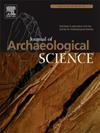The emergence, development, and impact of prehistoric agriculture on the Tibetan plateau
IF 2.5
1区 地球科学
Q1 ANTHROPOLOGY
引用次数: 0
Abstract
The Tibetan Plateau, the highest region in the world, presents significant challenges for human survival due to its extreme environment characterized by hypoxia, low temperatures, intense radiation, and limited food resources. The formation and development of agriculture (including crop cultivation and livestock husbandry) on the Tibetan Plateau reflect human adaptation to high-altitude environments. In the past decade, in addition to traditional archaeobotany and zooarchaeology based on morphological studies, analyses of stable carbon and nitrogen isotope, lipid, ancient DNA, and ancient sedimentary DNA have been employed to investigate the history of agricultural development on the Tibetan Plateau, resulting in a series of new findings. Based on comprehensive analyses of flora and fauna remains, along with a database of archaeological radiocarbon dates, we summarize the evolution and impacts of prehistoric agriculture on the Tibetan Plateau as follows. (1) The development of agriculture can be divided into three phases: millet agriculture, mixed millet-barley-wheat agriculture, and barley-wheat agriculture. (2) Crops from the East and the West spread via the “Plateau Road.” (3) The sequential emergence of millet and barley-wheat agriculture triggered two significant waves of human exploitation of the high-elevation regions. This is evidenced by the onset of sedentism in the lower-elevation river valleys (1500–3000 masl) initiated by intensive millet agriculture, followed by the expansion of settlements into higher altitudes (>3000 masl) facilitated by barley-wheat agriculture. Future research directions may focus on several key areas: the adaptation processes of introduced domesticates (including crops and livestock such as cattle, sheep, goats, and horses) to high-altitude environments, the local domestication of yak and Chenopodium, and the impacts of introduced crops and domestic animals on both human societies and alpine ecosystems. These investigations could be advanced through increased archaeological work and the application of cutting-edge methods, particularly ancient DNA and ancient sedimentary DNA analyses.
史前农业在青藏高原的出现、发展和影响
青藏高原是世界海拔最高的地区,其缺氧、低温、强辐射、食物资源有限等极端环境给人类生存带来了重大挑战。青藏高原农业(包括作物种植和畜牧业)的形成和发展反映了人类对高海拔环境的适应。近十年来,除了传统的基于形态研究的考古植物学和动物考古学外,稳定碳氮同位素分析、脂质分析、古DNA分析和古沉积DNA分析也被用于青藏高原农业发展史的研究,取得了一系列新发现。基于对青藏高原动植物遗迹的综合分析,结合考古放射性碳测年数据,我们总结了史前农业在青藏高原的演变及其影响。(1)农业的发展可分为三个阶段:谷子农业、谷大麦小麦混合农业和大麦小麦农业。(2)东西方的农作物通过“高原之路”传播开来。谷子和大麦小麦农业的相继出现,引发了人类对高海拔地区的两次重大开发浪潮。密集的谷子农业引发了低海拔河谷(1500-3000米)的定居主义,随后大麦小麦农业促进了定居点向高海拔地区(3000米)的扩张,这证明了这一点。未来的研究方向可能集中在几个关键领域:引进驯化动物(包括作物和牲畜,如牛、绵羊、山羊和马)对高海拔环境的适应过程,牦牛和藜草的本地驯化,以及引进作物和家畜对人类社会和高山生态系统的影响。这些调查可以通过增加考古工作和应用尖端方法,特别是古代DNA和古代沉积DNA分析来推进。
本文章由计算机程序翻译,如有差异,请以英文原文为准。
求助全文
约1分钟内获得全文
求助全文
来源期刊

Journal of Archaeological Science
地学-地球科学综合
CiteScore
6.10
自引率
7.10%
发文量
112
审稿时长
49 days
期刊介绍:
The Journal of Archaeological Science is aimed at archaeologists and scientists with particular interests in advancing the development and application of scientific techniques and methodologies to all areas of archaeology. This established monthly journal publishes focus articles, original research papers and major review articles, of wide archaeological significance. The journal provides an international forum for archaeologists and scientists from widely different scientific backgrounds who share a common interest in developing and applying scientific methods to inform major debates through improving the quality and reliability of scientific information derived from archaeological research.
 求助内容:
求助内容: 应助结果提醒方式:
应助结果提醒方式:


